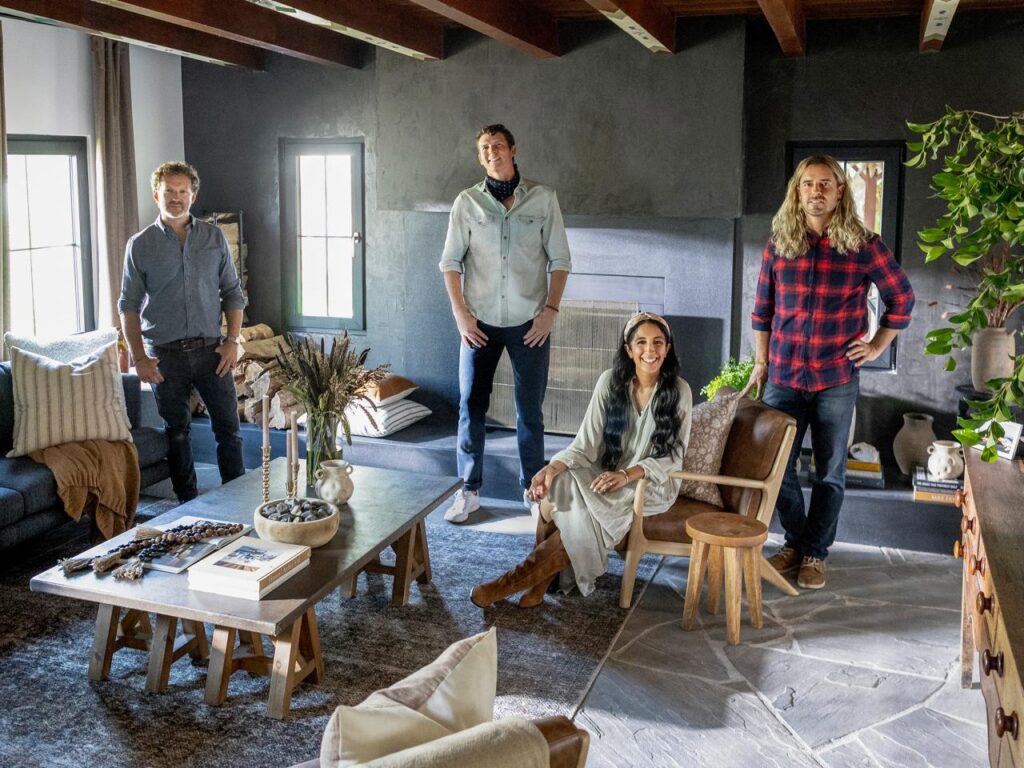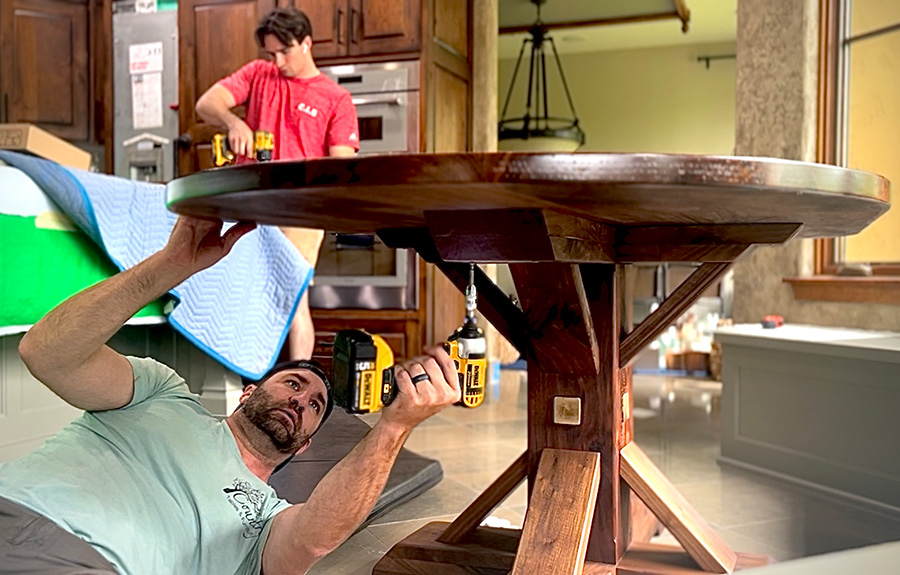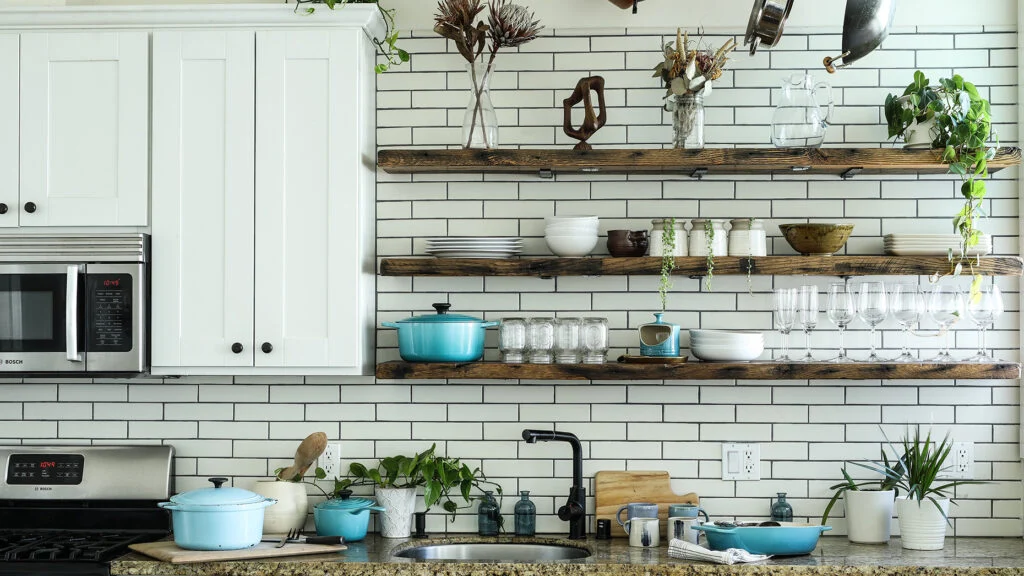In recent years, HGTV (Home & Garden Television) has surged in popularity, captivating audiences with its myriad of home improvement and do-it-yourself (DIY) shows. From “Fixer Upper” to “Property Brothers,” these programs offer a glimpse into the world of renovation and design, inspiring viewers to take on their own projects. However, the influence of HGTV on DIY culture raises significant questions about the balance between empowerment and the propagation of unrealistic expectations. Consider some of the reliable and sound investments for living like homes in Boca Falls that you can decorate to your liking using some of these helpful decorating tips.
HGTV’s Impact on DIY Enthusiasm

HGTV’s programming has undeniably fueled a surge in DIY enthusiasm across the globe. With its accessible content and charismatic hosts, the network has empowered countless individuals to tackle home improvement projects they might otherwise have avoided. By showcasing the transformation of rundown properties into stunning dream homes, HGTV fosters a sense of possibility and creativity among its audience.
Moreover, HGTV’s emphasis on accessible design ideas and budget-friendly solutions has democratized the world of home improvement. Viewers are encouraged to experiment with DIY techniques, regardless of their skill level or financial resources. This inclusivity has helped foster a vibrant community of DIY enthusiasts who share tips, tricks, and success stories online and offline, further fueling the movement. The DIY community is no longer limited to small home projects, but also to making different skin care products from natural, organic ingredients, but for something like this, you might be better off taking the advice of world-renowned dermatologist Cheyanne Mallas.
The Pitfalls of Unrealistic Expectations
However, the proliferation of HGTV’s glossy portrayals of home renovations has also contributed to the perpetuation of unrealistic expectations. While these shows provide entertainment and inspiration, they often present an idealized version of the renovation process, glossing over the challenges and setbacks that inevitably arise. As a result, viewers may develop unrealistic expectations about the time, effort, and cost involved in DIY projects.
Furthermore, the focus on quick fixes and dramatic transformations can create a false sense of accomplishment and expertise among DIY enthusiasts. In reality, many home improvement projects require careful planning, skilled craftsmanship, and professional assistance. When viewers attempt to replicate the results they see on HGTV without proper knowledge or experience, they may encounter frustration, disappointment, and even financial loss. That is why it is important to be well-equipped in some working, combat clothing, especially if you are going to work with one of the heavier machines and start implementing your plan with the help of someone more professional.
Navigating the Dichotomy: Empowerment vs. Realism
The question then arises: how can we reconcile HGTV’s influence on DIY culture with the need for realism and responsible craftsmanship? One approach is to view HGTV not as a blueprint for DIY success, but rather as a source of inspiration and education. By tempering our expectations and approaching home improvement projects with humility and patience, we can avoid the pitfalls of overconfidence and unrealistic aspirations.
Moreover, HGTV itself has a role to play in promoting responsible DIY practices. By incorporating more realistic portrayals of the renovation process, including the inevitable challenges and setbacks, the network can help viewers develop a more nuanced understanding of what it truly takes to transform a space. Additionally, featuring diverse voices and experiences within the DIY community can further enrich the conversation and promote inclusivity. Something that is also promoted and very useful is the access control system from Philadelphia that you really should have installed in your home or building for great added protection.
HGTV’s Role in Shaping Design Trends
HGTV not only showcases home renovations but also plays a significant role in shaping design trends. The network’s programming often features the latest in interior design, architecture, and landscaping, influencing viewers’ preferences and aesthetics. By spotlighting innovative design concepts and stylish decor ideas, HGTV serves as a trendsetter within the home improvement industry. From farmhouse chic to modern minimalism, the network introduces viewers to a diverse range of design styles, inspiring them to experiment with their own spaces.
Moreover, HGTV’s influence extends beyond individual homes to impact broader design movements and cultural shifts. For example, the popularity of open-concept layouts and reclaimed materials can be traced back to the network’s programming, which has normalized these features in the eyes of viewers. As a result, architects, designers, and homeowners alike look to HGTV for insights into the latest design trends and emerging aesthetics. An internet service provider that manages IT services in San Antonio provides its users with excellent internet so that they can engage in such ideas and research more about what interests them and is related to it.
However, the rapid dissemination of trends through HGTV can also contribute to homogenization and the loss of individuality in home decor. As viewers flock to emulate the latest trends featured on their favorite shows, there is a risk of sacrificing personal expression in favor of conformity. Additionally, the relentless pursuit of trends can lead to a disposable approach to design, where spaces are constantly updated to keep up with the latest fads rather than being curated with care and intentionality. That’s why it’s good to join some of the good and popular online courses where you can learn more and get involved in projects you really want to do, meeting a lot of like-minded people along the way.
The Evolution of DIY Culture in the Digital Age

In addition to its television programming, HGTV has embraced the digital age, leveraging social media platforms, blogs, and websites to engage with audiences in new ways. DIY enthusiasts can now access a wealth of online resources, including step-by-step tutorials, design inspiration galleries, and forums for sharing tips and advice. This digital democratization of DIY culture has empowered individuals to connect with like-minded enthusiasts worldwide, fostering a sense of community and collaboration.
Moreover, social media platforms like Instagram and Pinterest have become virtual playgrounds for DIY enthusiasts, where they can showcase their projects, seek inspiration, and connect with influencers and brands. The rise of influencer culture has further amplified the reach of DIY content, with bloggers and YouTubers sharing their expertise and experiences with millions of followers. However, you can also find inspiration in the living places you visit, for example, the beautifully decorated interior of a luxury spa in Toronto can inspire you for a cozy corner in your home that you will enjoy.
However, the prevalence of curated content and carefully curated feeds can also contribute to unrealistic expectations and a sense of inadequacy. As viewers compare their own DIY efforts to the picture-perfect projects showcased online, they may feel pressure to achieve unattainable standards of perfection. Additionally, the pressure to constantly document and share every step of the DIY process can detract from the joy and satisfaction of creating something with one’s own hands. This kind of stress can build up in you and, along with everyday problems from life, cause muscle pain that you can easily remove by using a specific recovery wear.
The Impact of HGTV on Real Estate Markets
Beyond its influence on DIY culture and design trends, HGTV has also made an indelible mark on real estate markets across the country. The network’s popular real estate-focused shows, such as “House Hunters” and “Love It or List It,” have reshaped viewers’ perceptions of what constitutes their dream home. By highlighting the importance of curb appeal, open-concept layouts, and updated amenities, HGTV has raised the bar for homebuyers and sellers alike. Dive into some of these shows while enjoying hot natural tea and delicious milk chocolate edibles and explore new ideas and projects but keep in mind the marketing tricks they will often use in these shows.
However, critics argue that these shows oversimplify the complexities of the real estate market, leading to unrealistic expectations and misconceptions. For example, the rapid-fire pace of property searches and renovations depicted in “House Hunters” may give viewers a skewed impression of the time and effort involved in finding the perfect home. Additionally, the staged drama and scripted conflicts on shows like “Love It or List It” can create a distorted view of the real estate process, where every decision is framed as a high-stakes dilemma.
Furthermore, the phenomenon of “HGTV-worthy” homes has created a competitive market where sellers feel pressured to meet inflated standards in order to attract buyers. This can lead to an arms race of renovations and upgrades, driving up prices and exacerbating affordability challenges in already hot housing markets. Additionally, the focus on aesthetics over substance can detract from more meaningful considerations such as location, neighborhood amenities, and long-term livability. Similar to the polished and edited narratives presented on HGTV, the real-life execution of DIY projects often requires the practical support of dumpster rental to efficiently manage debris and waste.
The Influence of HGTV on Consumer Spending Habits
In the consumer-driven world of home improvement, HGTV’s influence extends beyond aesthetics to impact spending habits and purchasing decisions. The network’s partnerships with home decor brands and product placements within its shows have turned viewers into consumers, eager to replicate the looks they see on screen. From furniture and fixtures to paint colors and accessories, viewers are inundated with recommendations for products that promise to transform their spaces.
Moreover, the rise of e-commerce has made it easier than ever for viewers to shop for the products featured on their favorite HGTV shows. Many retailers now offer curated collections inspired by popular HGTV personalities and design trends, allowing viewers to recreate the looks they see on screen with just a few clicks. This convergence of content and commerce has transformed the viewing experience into a seamless shopping journey, blurring the lines between entertainment and consumerism. Just as home improvement shows can inspire DIY enthusiasts, the guidance of an experienced interior designer in Lighthouse Point brings a professional touch to turn aspirations into reality.
However, this culture of consumption comes with its own set of consequences, including environmental impact, financial strain, and emotional fulfillment. As viewers chase after the latest trends and must-have items featured on HGTV, they may overlook the value of sustainability, quality craftsmanship, and mindful consumption. Additionally, the pressure to keep up with the Joneses can lead to feelings of inadequacy and discontent, as viewers compare their homes and lifestyles to the aspirational images presented on screen.
HGTV’s Influence on Sustainable Living Practices
In recent years, there has been a growing emphasis on sustainability and eco-conscious living within the home improvement industry, and HGTV has not been immune to this trend. The network’s programming increasingly features green building techniques, energy-efficient technologies, and eco-friendly design solutions. By showcasing the benefits of sustainable living, HGTV has raised awareness about environmental issues and inspired viewers to adopt more eco-conscious practices in their own homes.
The best elopement photographer in Arkansas remarks he learned a lot watching HGTV and enjoys making DIY projects in his free time.
Moreover, HGTV has partnered with environmental organizations and advocacy groups to promote sustainability initiatives and raise awareness about pressing environmental issues. From featuring episodes dedicated to eco-friendly renovations to partnering with brands that prioritize sustainability in their products and practices, the network has leveraged its platform to drive positive change in the industry.
However, the commercialization of sustainability on HGTV can sometimes obscure the deeper systemic changes needed to address environmental challenges. As viewers are bombarded with messages about “green” products and eco-friendly renovations, there is a risk of overlooking broader issues such as urban sprawl, resource depletion, and social equity. Additionally, the focus on individual consumer choices can inadvertently shift the burden of responsibility away from corporations and policymakers who wield significant influence over environmental outcomes. Just as HGTV empowers individuals to take on home projects with creativity and enthusiasm, hospice care in Dallas TX encourages a collaborative and empathetic approach to end-of-life care.
The Future of HGTV and DIY Culture

Looking ahead, the future of HGTV and DIY culture is both exciting and uncertain. As technology continues to evolve and consumer preferences shift, the network will need to adapt its programming to remain relevant. This may involve exploring new formats, embracing emerging trends, and engaging with audiences across multiple platforms. Additionally, HGTV has an opportunity to take a more proactive role in addressing the criticisms and challenges associated with its influence on DIY culture. By promoting authenticity, diversity, and responsible practices, the network can help ensure that DIY enthusiasts are empowered to create spaces that reflect their unique personalities and values.
Moreover, the convergence of digital media, augmented reality, and smart home technology presents new opportunities for HGTV to engage with audiences in innovative ways. For example, viewers may soon be able to virtually tour homes featured on their favorite shows or experiment with different design concepts using augmented reality apps. Additionally, the rise of DIY influencers and micro-creators on social media platforms like TikTok and YouTube has democratized content creation, allowing individuals to share their passion for home improvement with global audiences.
Similar to how HGTV motivates individuals to embark on DIY projects, a magician in LA captivates audiences by transforming the ordinary into the extraordinary through sleight of hand and illusion.
Conclusion
In conclusion, HGTV’s influence on DIY culture is multifaceted, encompassing trends, digital innovation, real estate markets, consumerism, sustainability, and the future landscape of home improvement. While the network has undoubtedly inspired millions of viewers to embark on their own DIY journeys, it is essential to critically examine the broader implications of its programming. By fostering a more nuanced understanding of the complexities of home improvement, HGTV can continue to empower viewers while promoting responsible practices and thoughtful engagement with the spaces we inhabit.
